Bentley & Skinner, the jewellers at 55 Piccadilly, marked the death of their most famous client by removing everything from the front window. Their business connection with the royal family dates began in the 1880s when Alfred Skinner was “summoned” to the palace to show a selection of pieces to Queen Victoria. Something caught the eye: they were promptly awarded the royal warrant and subsequently served as “Jewellers by Royal Appointment to both Her Majesty the Queen and His Royal Highness, the Prince of Wales”.
To commemorate her death, the blue velvet tiers of the window display are bare this week, save a black-and-white photograph of Queen Elizabeth and a single flower in a vase. In a way, the pared-back commemoration says more about the 96-year-old life of the queen than the hundreds of thousands of cellophane-wrapped bouquets and handwritten notes that have ended up in Green Park.
Since the queen’s death was announced, everything that has happened in London has reflected, through symbolism and pomp, the power of the royals on a staggering scale. It has reinforced the dynastic element of a family and institution that has, in a moment of grief, been embraced by its public in a way that it has not experienced for decades.
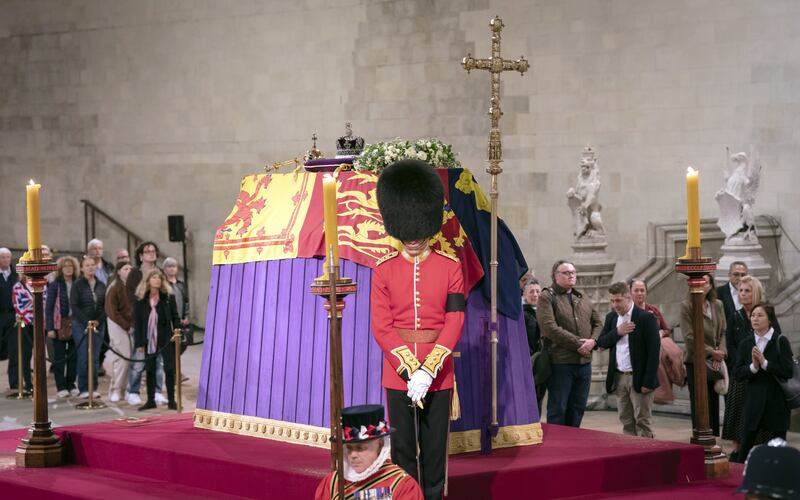
On Tuesday of last week, Queen Elizabeth was seen greeting the new prime minister Liz Truss in Balmoral, but by Thursday tea-time, an ashen faced Huw Edwards announced her death during the BBC’s six o’clock news. Despite her advanced years, her death appeared to occur swiftly. It seems that all of Britain – from the royals themselves to the politicians, the media and the public – have been struggling to catch up since.
RM Block
The prevailing tone of the BBC, which has covered the royals’ every move in a collective voice of tremulous, reverential gravitas, has added to the strangeness of the entire week. The obsequiousness of royal correspondents is easy for outsiders to scoff at, but on the ground across the city there exists a heartfelt and genuine affection for the queen. The thousands of mourners carry with them emotions which are complex and substantial.
Everyone knows that they feel something but have been unsure how to articulate it. In countless television and radio broadcasts, they say the same thing. They came “to pay respects”. They felt they “had to be there”, taking the slow walk along the Mall and reading the tributes left along the front walls of Buckingham Palace. There were scores of Paddington Bears and marmalade sandwiches wrapped in cellophane with the inscription, “For later”.
[ Queueing to see Queen Elizabeth: Centuries become jumbled as mourners pay their respects ]
[ Another death and a different procession through LondonOpens in new window ]
[ Queen Elizabeth: Crowds watch as city bends to weight of royal familyOpens in new window ]
Many would tear up when speaking about her. That may have been attributable to the hushed atmosphere and the jolt of being present, touching the gates of the gloomy palace and brushing up against history
Over her long life, the queen managed the trick of retaining a degree of enigma – largely, as has been noted, by saying very little about anything – without alienating her public. She spent her working life meeting people without ever having the time, whatever about the inclination, to have a serious conversation with them. A handshake; that disarming smile; a light, inconsequential few words and on to the next: it takes stamina to do that millions of times for three quarters of a century.
Some of the mourners who gathered around the Palace had met her but all felt they knew her. Some claimed to “love” her. Many would tear up when speaking about her. That may have been attributable to the hushed atmosphere and the emotional jolt of being present, touching the gates of the gloomy palace and brushing up against history.
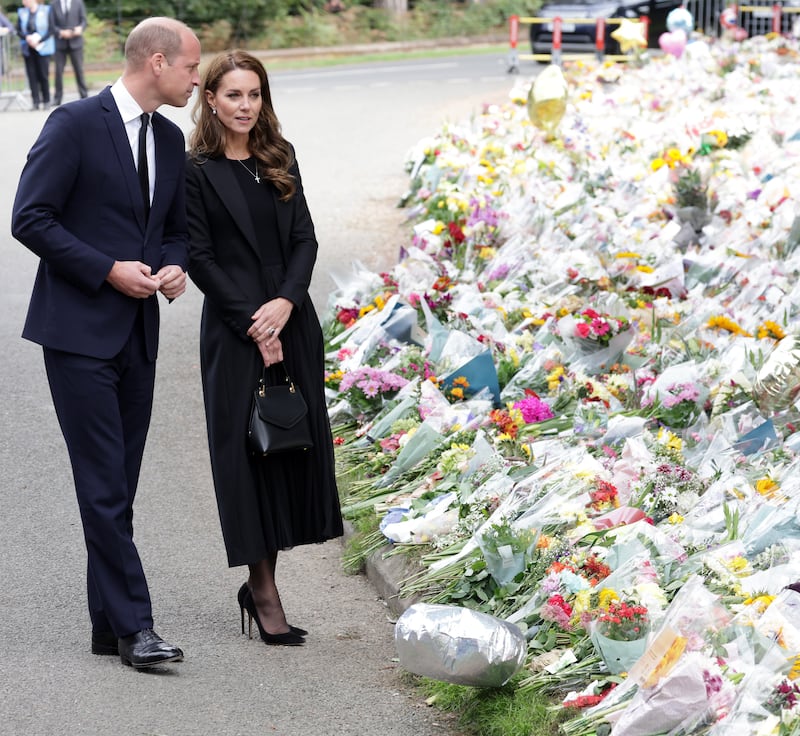
The story of the monarchy with Elizabeth II at its head, from 1952 until last week, was itself desperately messy at times: a rollicking soap opera scavenged and slanted by Fleet Street even as Britain’s international influence and power receded dramatically. The family became messy but she herself was not. What those who mourned her seemed to want to commemorate was the stoicism with which she stuck to the task of being queen, formidably even-tempered as she passed into her ninth decade.
The span of her reign is just about comprehensible to most people. Churchill, who was prime minister when she took the throne, has long passed into a figure of myth and controversy. She was a young mother when Bobby Moore lifted the World Cup. As she aged, she stood as an enduring symbol of a vanished era – the Britain of four TV channels, of Tommy Cooper and Royal Variety performances.
She fluctuated between the timeless monarch depicted in the Netflix series The Crown, which deepened the mystique and blurred the lines between truth and hearsay, and the grandmotherly figure, in her headscarf, with her dogs.
She wasn’t their grandmother but – apart from the multibillion-pound estate – she might have been, with the sense there was always a packet of boiled sweets tucked away in those handbags of hers. In part, the mourners flocked to the place out of nostalgia for the countless Christmas dinners with long-gone loved ones and the forgotten speeches the queen delivered, days existing now only in Polaroid. They were mourning those parts of their lives that belong in an ungraspable past. On Thursday, the Archbishop of Canterbury Justin Welby told the BBC as much: “I’ve had conversations yesterday where the process had renewed their sense of grief over their own losses.”
Procession
The procession of people walking beneath the millennial bridge to take their place in the queue to view her casket, lying in State in Westminster Hall for four days and nights, encompassed every age and background. The queen commanded a peculiarly broad appeal – she was almost certainly the only person whom Kate Bush ever asked for an autograph. All week, the public had been advised they would have to wait for up to 30 hours to stand for a few seconds in front of her casket.
At nine o’clock on Wednesday night, though, the line was brisk, and the stewards told new arrivals, to their delight, that they should be through in just three hours. But soon, the queue took on a life of its own. By Thursday, the advised waiting time was eight hours. Thousands stood through dipping temperatures overnight, inching along the Thames. By Friday, the wait was 14 hours and the government announced that the crowd was at capacity.
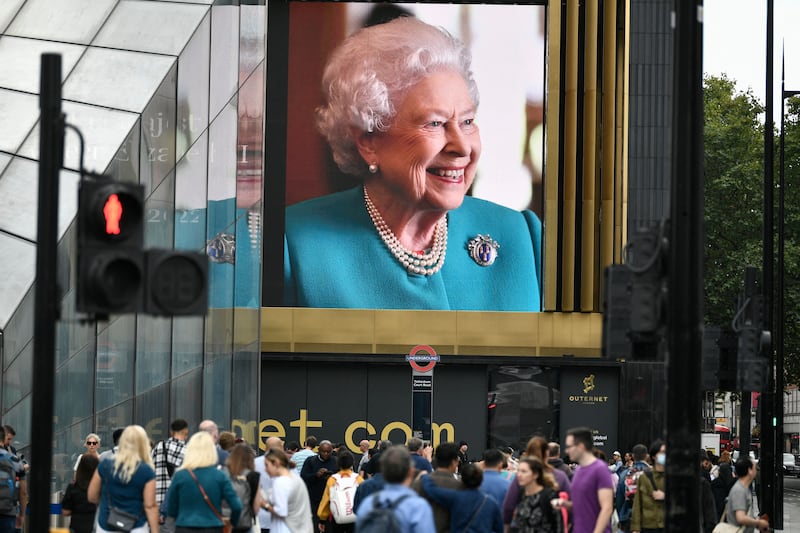
The pubs and restaurants around Southwark Cathedral will remain busy as ever. London’s touristic and commercial interests keep turning. Near Charing Cross on Wednesday evening, an outbreak of shrill screams announced to tourists that a bona fide celebrity had been spotted, provoking a quick rush to see who it might be. Turned out to be Gary Barlow, former Take That member exiting the theatre after his show, A Different Stage.
It would take a miserable soul not to feel at least a fleeting sympathy for the ordeal of hoop-jumping visits and vigils and uniforms Charles, a grieving son, has endured since assuming the crown
“For f**k’s sake” shouted a man as a police officer shooshed everyone on to the narrow footpath so the star could make his getaway from the theatre via Range Rover. The man was one those London archetypes – suited, in a hurry, on the verge of fury. “You’d think it was the queen,” he shouted angrily at the darkened windows of Barlow’s window. Well, quite. But wasn’t Gaz one Her Majesty’s faves: one of the mainstream performers to whom she allegedly like to listen? Titbits of trivia afforded her the illusion of the common touch, something her eldest son has struggled to emulate.
Irrespective of one’s feelings on the monarchy, it would take a miserable soul not to feel at least a fleeting sympathy for the ordeal of hoop-jumping visits and vigils and uniforms Charles, a grieving son, has endured since assuming the crown. Already, he is under scrutiny to perform. The footage of his response to that leaky pen fountain pen at Hillsborough and the show of temper – “every stinking time” – was at once an understandable show of vexation from an exhausted 73-year-old man and a slip in decorum that his mother never exhibited over her 70 years as queen.
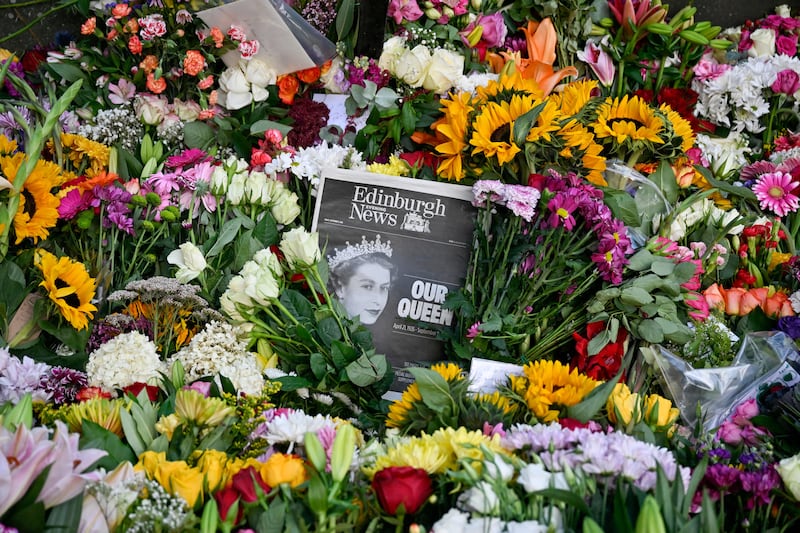
News that up to 100 staff at Clarence House had been given notice of redundancies during the service for Queen Elizabeth at St Giles’s in Edinburgh was spectacularly ill-timed. It coincided with an inevitable spotlight on the royals’ wealth: the new king will assume control of the £36 billion (€41 billion) portfolio of assets held in trust for the kingdom and, in his many years as prince-in-waiting, diverted sufficient time from his environmental and charitable causes to oversee his personal investments top £1 billion. He will pay no inheritance tax on his assumption of his mother’s assets. With Britain in the grip of a vicious inflationary cycle and a winter of home heating and energy crises looming, the extraordinary wealth makes for obvious comparisons.
But nobody among the crowds in London seemed remotely bothered by the vast worth of the crown estate. The palaces and glittering crowns have become part of the storyline. Some of their most devout “subjects” come from the more impoverished parts of the city, of the country. What is the point of a king if he is not to live like a king? It’s not as though he will be leading his subjects into wars. And so, Wednesday’s ceremonial march from Buckingham Palace to Westminster Hall was an unabashed reflection of that reserve of wealth and power and an illustration that when the occasion so demands, everything – the government, the state machinery – clicks its heels and falls into place behind the royal family.
To outsiders, watching with a detached eye, the scale and hauteur of the entire pageant was a strange and unsettling experience even as the public became teary and issued low calls of “God Save the King”. It felt, to anyone on the street, like the royals owned the city that afternoon. They marched in synchronised step to the bass drum for the 40-minute walk, which was timed to the last beat. This, when not visiting hospitals or the dwindling commonwealth nations, is what they excel at: the pageantry of Britishness, of being royal.
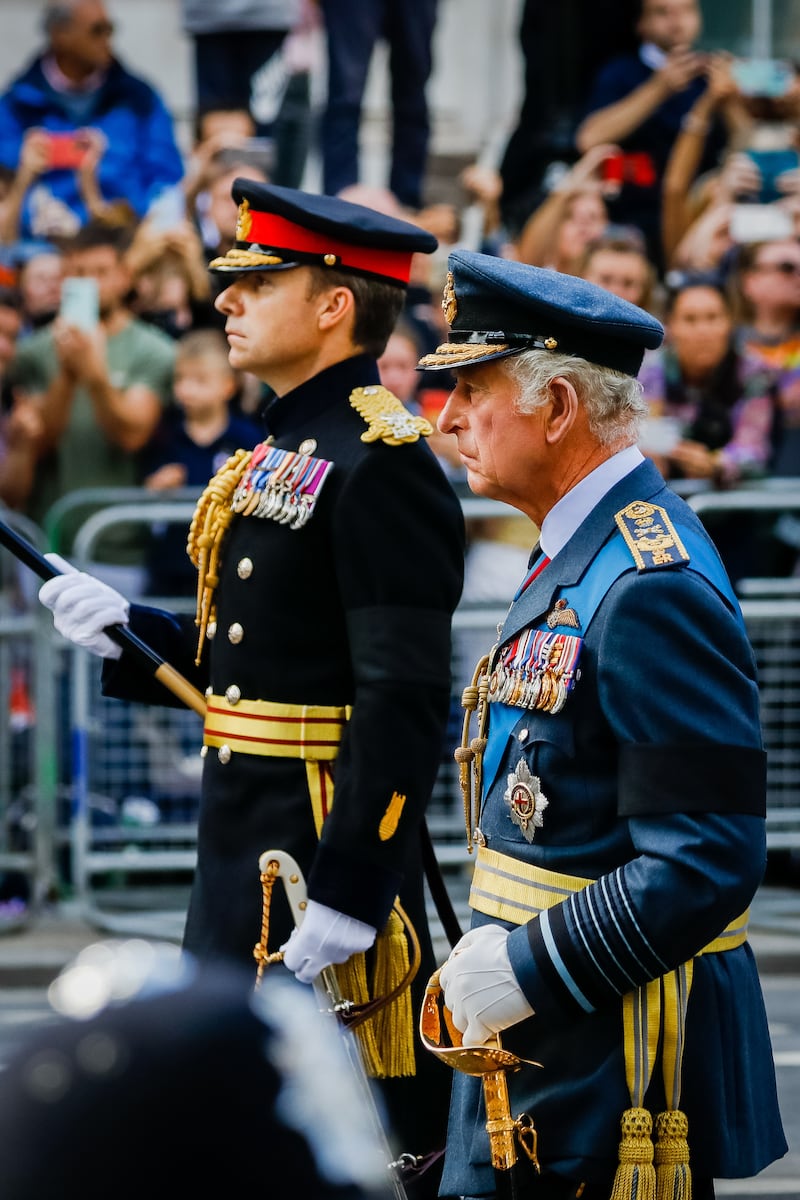
But for all the vast bands and the immaculate military uniforms, they looked forlorn, too, without their matriarch. They have lost so many of their vivid presences over the past 30 years. Diana is gone. Margaret is gone. Philip is gone. And now, Queen Elizabeth has departed.
Spectral presence
Through the blanket coverage this week, the spectral presence of Diana, in whom the general fascination has never abated, has been delicately sidestepped. But the floral ocean outside the palace and in Green Park evokes instant comparisons to the hot, eerie September days of 1997 when the British public gave itself over to an intense period of mourning for the princess after the shock of her death in that car crash in Paris. The public looked to the senior figures of the royal family then for an adequate response and found it wanting. The queen herself was perceived as cold and unfeeling as she struggled to respond to the explicit expressions of public grief, which were so clearly alien to her.
The death of the queen has created a national wave of goodwill towards the House of Windsor. Monday’s funeral will bring another prolonged gust of positive emotion and well wishes
In 1983, two years after the gauzy fairy-tale wedding of Charles and Diana, 83 per cent of the people thought the monarchy was “very” or “quite” important, in a survey carried out by the National Centre for Social Research. By 1998, those who believed the institution to be “very” important had fallen below 30 per cent. During the most recent survey, a full 25 per cent of those surveyed gave the opinion that the monarchy was either “not at all important” or should be abolished.
It is arguable that the closing phase of the queen’s reign, including her 2011 visit to Dublin, were her most distinguished. What cannot yet be known is how the royal family will prosper in its next era.
After the military uniforms have been placed in storage and after what the commentators have labelled the “second Elizabethan Age’” has been declared officially over, the bickering will resume in the House of Commons; the weather will turn; eye-watering bills will fall through the letter boxes of her late majesty’s subjects. The death of the queen has created a national wave of goodwill towards the House of Windsor. Monday’s funeral will bring another prolonged gust of positive emotion and well wishes. Harnessing all that energy and using it prudently will be the first task for the new king when the choirs fall silent, the crowds leave and the bouquets from across the land are cleared away.














